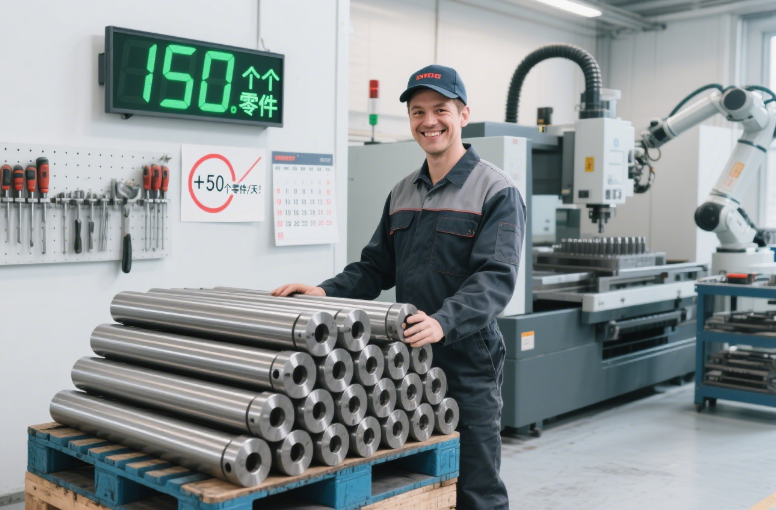Turning Tools: Pro Tips for Enhanced Performance and Efficiency
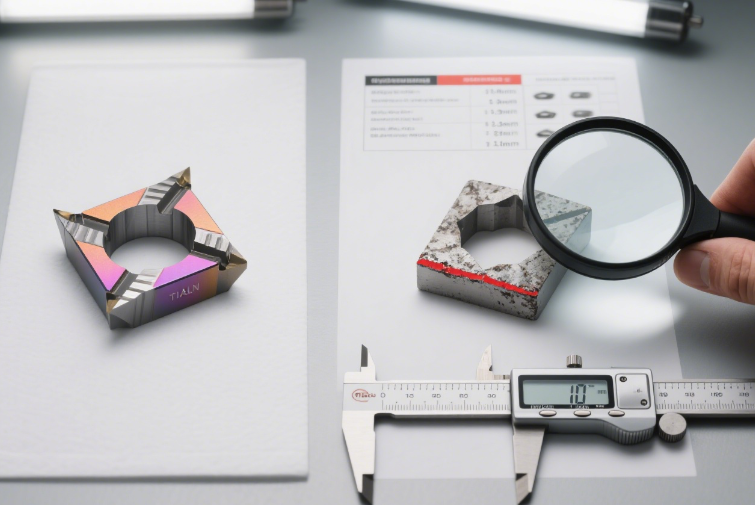
In the realm of metalworking, turning tools are the backbone of creating precise cylindrical parts, from simple shafts to complex aerospace components. However, even the highest-quality tools can underperform without proper technique. This blog shares actionable tips and efficiency-boosting methods to help machinists get the most out of their turning tools, backed by real-world scenarios.
1. Select Inserts Based on Material: The Foundation of Efficiency
Choosing the right insert for your workpiece material is the first step to avoiding premature wear and ensuring smooth cuts.
- For Steel and Cast Iron: Opt for carbide inserts with TiAlN coating. The titanium aluminum nitride coating withstands high temperatures (up to 800°C) and reduces friction, making it ideal for continuous cutting at speeds of 150–300 m/min.
- For Stainless Steel: Use AlCrN-coated carbide inserts. Stainless steel’s low thermal conductivity and work-hardening nature demand inserts that resist crater wear—AlCrN’s high oxidation resistance fits the bill, allowing feeds of 0.1–0.25 mm/rev.
- For Aluminum and Non-Ferrous Metals: Uncoated carbide or polished PCD (polycrystalline diamond) inserts prevent built-up edge (BUE). Their sharp cutting edges and low friction ensure mirror-like finishes at high speeds (2000–4000 RPM for small diameters).
Pro Tip: Always check the insert’s grade code—manufacturers like Sandvik or Kennametal provide charts matching grades to materials (e.g., GC4225 for steel, GC1030 for stainless).
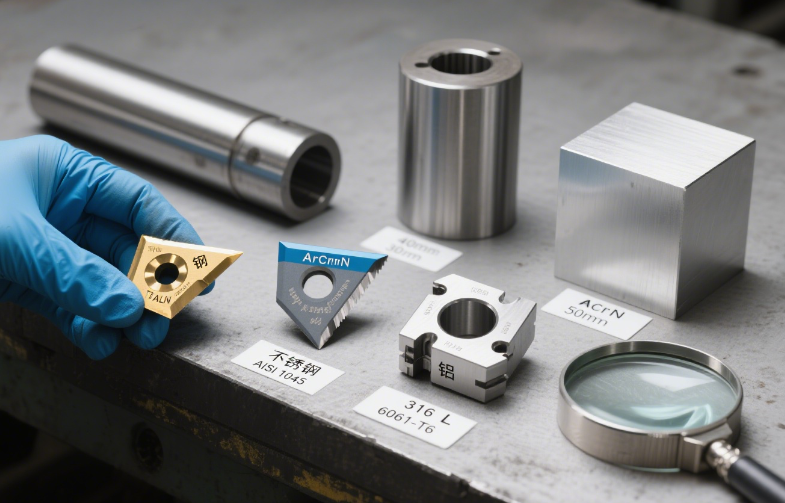
2. Optimize Speeds and Feeds: Balance Speed and Tool Life
Mismatched cutting parameters are the biggest culprit behind slow production and tool failure. Use these guidelines:
- Roughing Operations: Prioritize material removal rate (MRR) with a depth of cut (DOC) of 2–5 mm and feed rates of 0.2–0.3 mm/rev. For steel, keep spindle speeds moderate (800–1500 RPM) to avoid overheating.
- Finishing Operations: Focus on surface quality with a DOC of 0.1–0.5 mm and slower feeds (0.05–0.1 mm/rev). Increase RPM (1500–3000 RPM for steel) to achieve Ra 1.6–3.2 finishes.
- Formula Hack: Calculate optimal RPM using:
RPM = (Cutting Speed × 1000) / (π × Workpiece Diameter)
Example: For a 50mm steel bar with a cutting speed of 200 m/min:
RPM = (200 × 1000) / (3.14 × 50) ≈ 1274 RPM
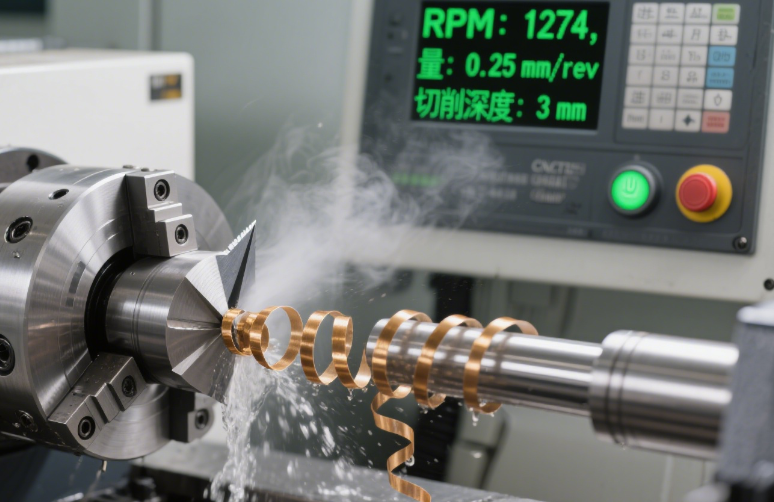
3. Reduce Vibration: The Key to Precision and Longevity
Vibration (chatter) causes poor finishes, tool chipping, and machine wear. Combat it with these steps:
- Shorten Tool Overhang: Keep the tool 伸出 (overhang) from the holder to 2–3× its diameter. Use a rigid tool holder (e.g., square shank) instead of a round one for added stability.
- Secure Workpieces Firmly: For long shafts (over 3× diameter), use a steady rest to support the free end. For thin-walled parts, wrap with tape or use a collet chuck to prevent deflection.
- Adjust Spindle Speed: If chatter occurs, shift RPM by 10–20% to avoid resonance frequencies. Most CNC lathes have a “chatter suppression” function—enable it!
Pro Tip: Add a damping bar to the tool holder for high-precision work; it absorbs vibration like a shock absorber.
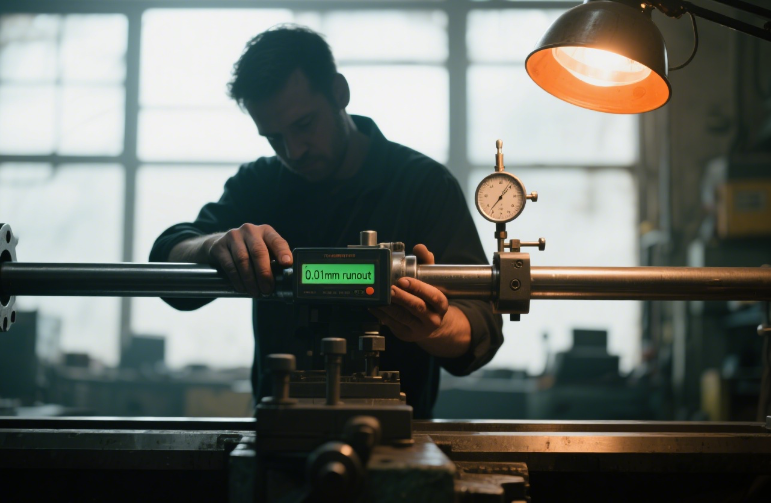
4. Master Coolant Application: More Than Just Cooling
Coolant isn’t just for preventing overheating—it lubricates the cut and flushes chips, extending tool life by 30%+.
- Direct the Nozzle: Aim coolant directly at the cutting edge, not the tool shank. For deep grooving or threading, use a high-pressure coolant system (30–100 bar) to blast chips out of the cut zone.
- Choose the Right Coolant:
- Soluble oil for general steel turning.
- Semi-synthetic for stainless steel (reduces corrosion).
- Air mist for aluminum (avoids staining).
- Clean Chips Regularly: Clogged chips block coolant flow—use a brush or air gun to clear them every 5–10 minutes during long runs.
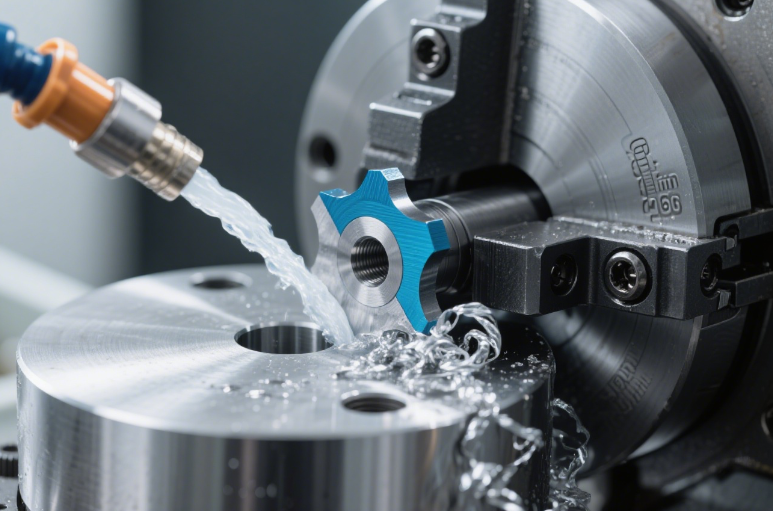
5. Extend Tool Life: Inspect and Rotate Inserts Strategically
A dull insert forces slower feeds and ruins finishes. Maximize insert life with these habits:
- Inspect for Wear: Check for flank wear (a smooth band on the insert’s side) daily. Replace when wear reaches 0.3–0.5 mm (varies by material).
- Rotate Inserts Early: Don’t wait for total failure—index (rotate) inserts at the first sign of dullness (e.g., rough finish, increased noise). This prevents overheating and extends insert life by 20%+.
- Store Inserts Properly: Keep them in a dry, cool place in their original packaging. Avoid dropping—carbide is brittle!

6. Automate Repetitive Tasks: CNC Features That Save Time
Modern CNC lathes have built-in features to boost efficiency—use them!
- Tool Offsets: Save time by presetting tool lengths and diameters in the machine’s memory. No more manual adjustments for each new tool.
- Cycle Repetition: Program repetitive operations (e.g., facing, turning a 50mm diameter) as a subprogram. Call it with one code instead of rewriting steps.
- Automatic Tool Changer (ATC): For multi-operation jobs, let the ATC switch tools in seconds—no more manual swapping between roughing and finishing inserts.
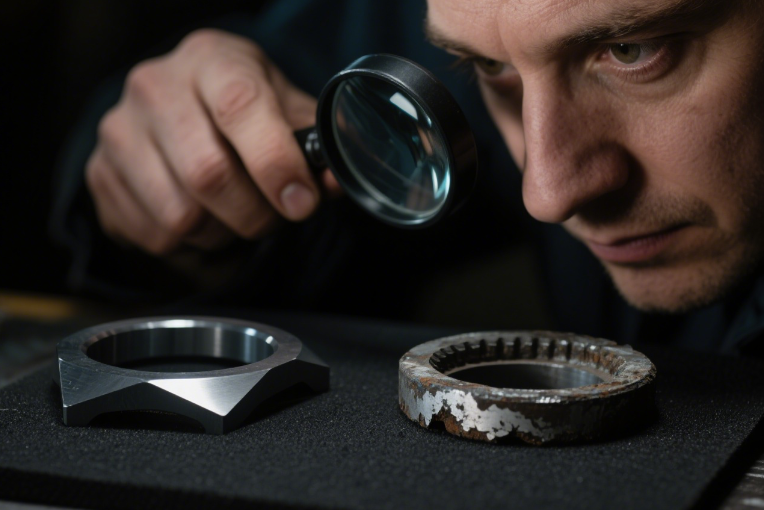
Results: From 100 Parts/day to 150 Parts/day
A small workshop implemented these tips and saw dramatic improvements:
- Tool changes reduced by 40% (from 8 to 5 per shift).
- Cycle time per part cut by 25% (from 4 minutes to 3 minutes).
- Scrap rate dropped from 5% to 1% due to better finishes.
